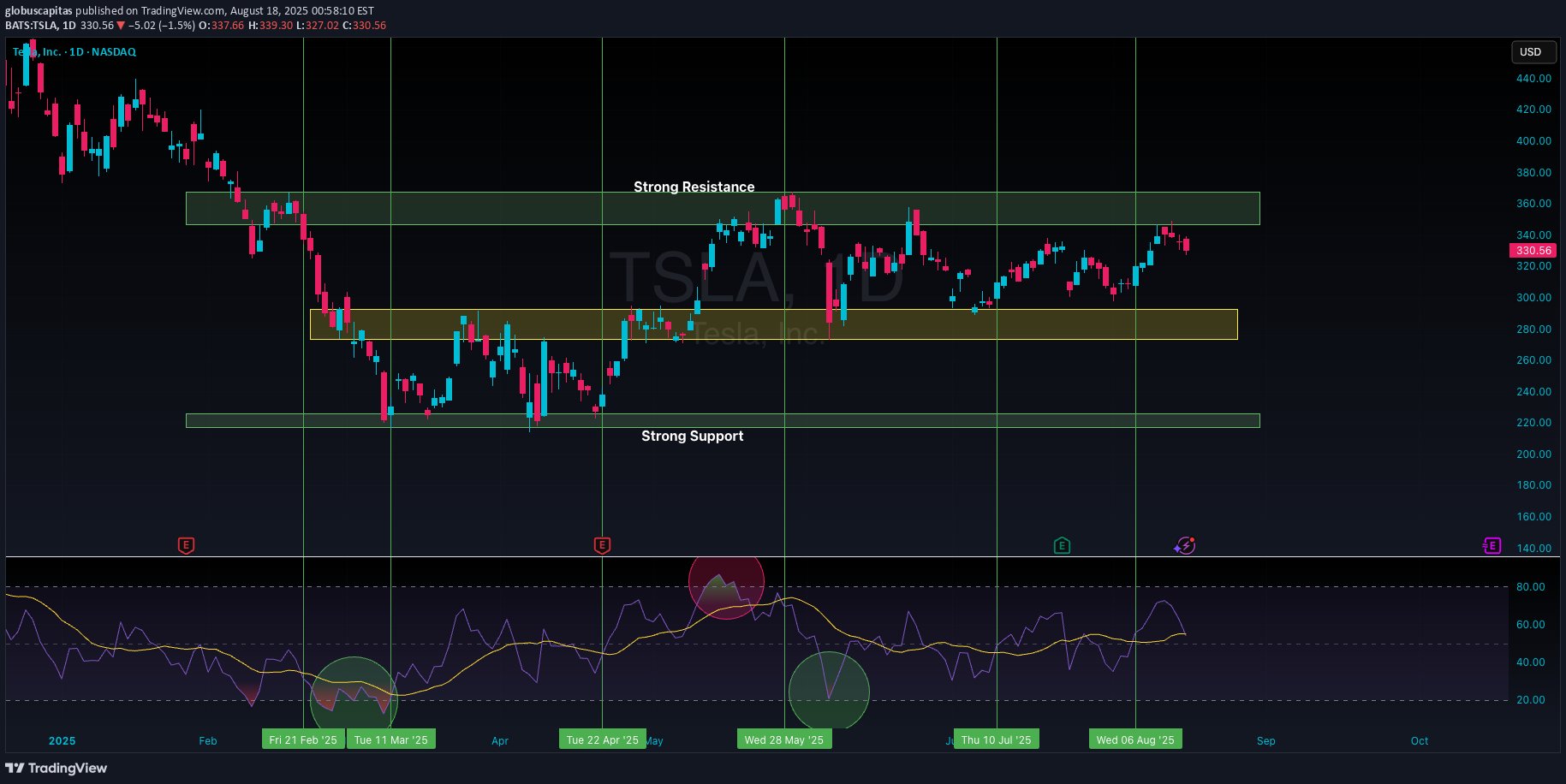Technical analysis by globuscapitas about Symbol TSLAX on 8/18/2025

Indicators are some of the most widely used tools in trading. From RSI and MACD to Bollinger Bands and Moving Averages, traders often treat them like magic signals that dictate buy or sell decisions. Unfortunately, this approach is one of the biggest reasons retail traders consistently lose money. Let’s break down why indicators are misused, and more importantly, how you can fix it to actually gain an edge in the markets. ⭐️ The Problem: Blind Dependence on Indicators ⭐️ Treating Indicators as Predictors Many traders believe indicators predict price movements. In reality, most indicators are lagging — they process past price data and only provide information after the move has already begun. For example, by the time RSI shows "oversold," the asset may already be in a downtrend with no real bounce in sight. Ignoring Market Context An RSI reading of 70 doesn’t automatically mean the market is about to fall. In strong uptrends, RSI can stay above 70 for weeks. Similarly, MACD crosses in sideways markets produce endless false signals. Without considering trend, support/resistance, and liquidity, indicators become traps. Overloading Charts Many retail traders clutter their charts with 5–10 indicators. The result? Confusion, contradictory signals, and “analysis paralysis.” Instead of clarity, indicators create noise. Copy-Paste Settings Using default settings like 14-period RSI or 20-day Bollinger Bands without understanding why they’re chosen is another misuse. Different markets, timeframes, and strategies require customized parameters. ⭐️ The Fix: Smarter Ways to Use Indicators ⭐️ Use Indicators as Confirmation, Not Signals Think of indicators as tools to support your analysis, not to replace it. For instance, identify a support level on the chart first, then use RSI divergence to confirm a potential reversal. Combine Price Action with Indicators Indicators work best when paired with price context. Example: A moving average isn’t just a crossover tool — it can act as dynamic support/resistance. Use candlestick patterns, trendlines, and market structure alongside indicators. Limit Your Toolkit Instead of stacking indicators, focus on 1–2 that complement your strategy. For example, a trend indicator (like EMA) plus a momentum indicator (like RSI) can be more effective than five conflicting tools. Customize Settings Adapt indicator parameters to your market. Short-term scalpers may use RSI(5) instead of RSI(14). Long-term investors may prefer a 200 EMA over a 50 EMA. Backtest and tweak until the settings fit your strategy. Learn the Logic Behind the Indicator Every indicator is built on math. RSI is based on average gains vs losses, MACD is a difference between moving averages, Bollinger Bands are standard deviations from a mean. Understanding the math prevents blind usage and helps you adapt creatively. ⭐️ Practical Examples ⭐️ RSI in Strong Trends : Instead of shorting every time RSI > 70, wait for divergence or combine it with a resistance level. This way, you avoid fighting strong momentum. MACD in Ranging Markets : Don’t use MACD crossovers in sideways price action. Instead, apply them in trending markets where momentum shifts matter. Bollinger Bands : Rather than assuming a touch of the upper band means reversal, use it to identify volatility expansion and possible breakouts. ⭐️ Key Takeaway ⭐️ Indicators are like tools in a toolbox. A hammer is powerful — but only if you know when and how to use it. The mistake most retail traders make is treating every hammer swing as a solution. If you stop chasing indicator signals and instead learn to integrate them with price action, context, and risk management , you’ll transform them from misleading crutches into powerful allies.
